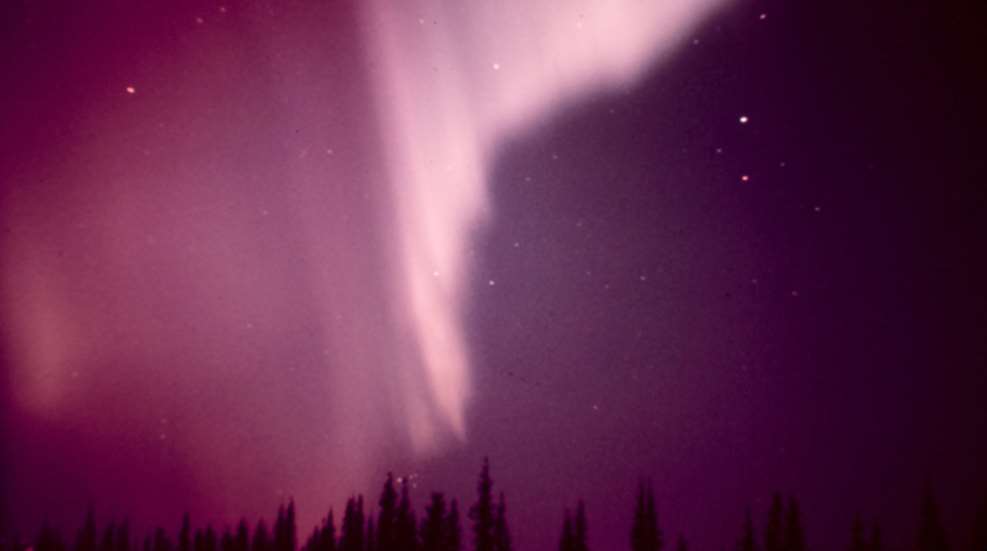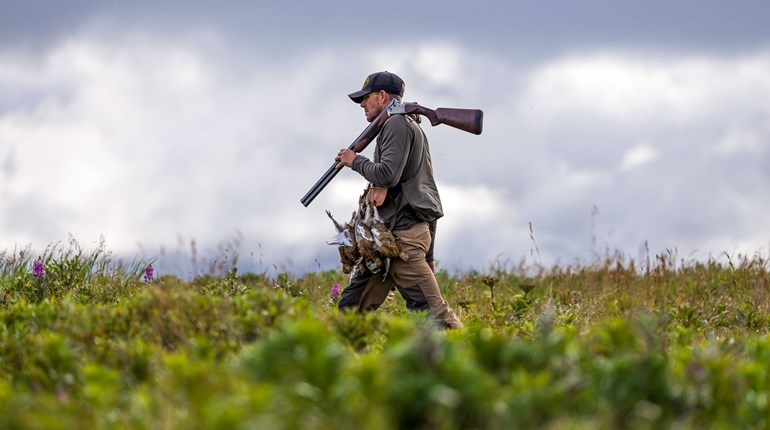
Where can you find towns that don't see daylight for weeks? Or where it's legal-I actually checked this-to bring a pet camel into the state? Or where, under feet of ice on a subarctic glacier, you can find remnants of tropical palm trees?
Such a place exists, and it's called Alaska. The state known as The Last Frontier is a place that lives up to its reputation as a land of extremes. For example: Barrow, Alaska (the northernmost city in Alaska) sees no sunlight from November to January, but from May to August, it never gets completely dark.
As for the camel, that's just one of many species considered OK by the state for sale or import -and yes, dogs and cats are also included on that list. Alaska has many laws governing the import of animals, for one very important reason: There are so many species found nowhere else, the state can't afford to risk an invasion of nonnative species. (Apparently, camels aren't considered too much of a threat.)
And what about that tropical palm tree? Well, Alaska used to be a lot warmer, millions of years ago. Fossils of palms and other tropical plants have been found under Malaspina Glacier, a massive chunk of snow and ice larger than the state of Rhode Island.
Those are just a few odd details about the 49th state. There are more-plenty more-to find as we go bushwacking, dogsledding, backpacking and boating through this massive and still mostly unexplored land.
Alaska's called America's Last Frontier. That's a big claim, but the place lives up to it. When Alaska was purchased from Russia in 1867, it was considered a big mistake by many Americans. The popular notion was that it was just a big chunk of ice, and was referred to as a “polar bear garden” by the press. The state-then a territory-was huge and remote, with a north-south distance of 1,420 miles (the approximate distance from Denver to Mexico City), and an east-west measurement of 2,500 miles (which is the distance from the Georgia coast to southern California's beaches). Alaska is twice the size of Texas. Much of it is still unexplored.
When gold and oil were discovered there years later, the critics were silenced. But there was more than just those resources. There were native Alaskans with fascinating artwork and religions-rich cultures that stretched back thousands of years. There were animals found nowhere else in the rest of the United States. Polar bears and walruses frolicked in the northernmost parts of the territory, while the Aleutian cackling goose hung out in the islands that stretch almost to Russia. The southeastern waters teemed with halibut and salmon, and glaciers broke apart, throwing building-sized chunks of ice into the ocean.
Go to Alaska today, and you'll find that it still lives up to the title of Last Frontier. It's one of the few places in the country where you can see airplanes landing on remote beaches and unpaved landing strips in the mountains. Fact is, in many parts of the state, that's the only way to get around.
Folks ask: How do Alaskans get around? Planes are expensive to charter, even though some villages are only accessible that way. Only about 30 percent of Alaska's public roads are paved. And there aren't many of those either. As one travel guide says, “Losing your way on Alaska's highways is pretty difficult, because there just aren't enough of them.”
So, Alaskans do what they do best. They get by. In my travels in Alaska, I've seen just about as many all-terrain vehicles (such as four-wheelers) as cars. Sometimes I've seen four-wheelers lined up in the parking lot during high-school basketball games.
This brings up another little factoid about getting around. How do sports teams at remote villages travel to compete against other teams? Simple: They have to fly. In remote villages on the coast, groceries have to be brought in by barges. Fresh fruits and veggies are pretty rare, not to mention expensive, as a result. And when the stores run out of particular grocery items, that's it-there will be no more until the next barge arrives.
Sometimes, though, it's impossible to get in or out of town. That's especially the case during the cold months. Winter in Alaska is brutal, no matter what part of the state you're in. Valdez, located just east of Anchorage in southern Alaska, averages 326 inches of snow every year-that's 27 feet!
That's just one headache. Another is the fact that, throughout Alaska, entire rivers freeze. In the spring there is what's called the “breakup,” which is when rivers turn from ice back into liquid. Predicting the breakup is a constant topic of conversation during this time, and for some, it can be pretty lucrative. In the central Alaskan village of Nenana, bets are placed on determining the exact moment of that spring's breakup. In 2008, the correct predictor won $300,000 for guessing right.
It takes this kind of creativity to stay sane in Alaska during the winter. Of course, there are outdoor activities as well, for folks willing to brave subzero temperatures (it regularly gets down to -20 degrees in Fairbanks). For the hardiest outdoorsmen (and women), there is ice climbing. The sport is simple: You climb up frozen waterfalls, hoisting yourself upwards with ice axes. One Harvard-trained physician described it this way: “You have to put up with a little suffering to really enjoy it.” The same could be said for enduring winter in general in Alaska.
The northern lights are another wintertime diversion you won't find anywhere in the States outside of Alaska. Though the lights (also called aurora borealis) go on year-round, it's best to see them when it's darkest outside, which is during the colder months of September through March.
Aurora borealis is the result of flares of particles exploding from the sun that mix with Earth's atmosphere. When these “solar winds” mix with gases in our atmosphere, the skies light up with wisps of greenish-yellow bands of color. Some can change colors, turning to pink, purple and red during the night.
So winter in Alaska may not that bad after all.
Summers are another story entirely. The mosquitoes there are almost as legendary as the scenery (side note: Did you know there are more than 20 varieties of mosquitoes in the state?), and they survive the winter just fine.
This is also the time of exploring the rugged backcountry. Alaska, which sits on the northeast edge of the “Ring of Fire” (a giant circle of volcanoes stretching from Russia to New Zealand, back around to South America and up the California coast), is home to 29 volcanoes. It has the highest mountain in North America (Mt. McKinley, or Denali, to Native Alaskans). Most of these places, not to mention the roads that can take you to them, are only accessible in the warm months.
There are plenty of places to go, too. Over half of the state is land that's been set aside by the government for recreation, such as national parks and wildlife preserves.
And did I mention the wildlife that comes out in the summer? This is when humpback whales swim through southeast Alaska before moving south to Hawaii for the winter. It's also when the birds- literally thousands of waterfowl-can be seen before flying to California for the winter. Moose are also running around, though they lose their distinctive antlers in the warm months. Beavers and other smaller mammals also seem to come from out of nowhere then.
There's one critter missing from this list: the grizzly bear. In the Kodiak Islands there's a special variety of grizzly that weighs 1,400 pounds – that's the same as a giraffe! And these critters are everywhere, too. The state's fish and game department's website puts it simply: If you live in Alaska, you live in bear country.
So how do you deal with that? Bear attacks are very rare in Alaska, but that doesn't mean it's safe to play with them. An old Alaska Native once told me, “They know where we live and we know where they live, and we don't bother each other.”
Sometimes that's easier said than done, though. I used to go running every day on a particular trail in southeast Alaska. I knew better than to do that in the early morning or evening, when bears were most active (they're notoriously lazy, and spend most of the day sleeping). Occasionally, though, there would be a grizzly or black bear right there on the trail, usually sniffing around for food.
Hunting bears and other wildlife is permitted in Alaska, but, as always, there are pretty strict rules that tell hunters what they can and can't do. Bear hunting is big business in Alaska, but it's scientifically managed and there are limits to how many you can shoot. Alaska has some of the friendliest laws for those who want to carry guns. It was one of the first states that passed something called “Constitutional Carry,” which means that, if you pass a background check, you can automatically carry a concealed handgun without a permit. You also don't need a permit to buy a rifle or shotgun in the state, either. As someone once told me soon after I arrived in Alaska, “There's no need to ask someone if they're carrying a gun here. Pretty much everyone is.”Alaska really is America's Last Frontier, a chunk of the Wild West that's still wild.






































